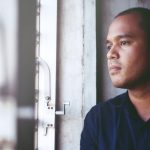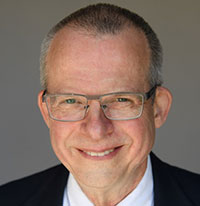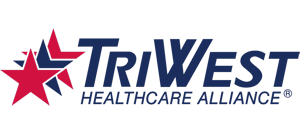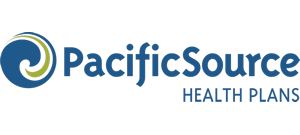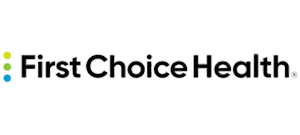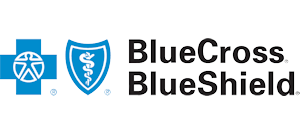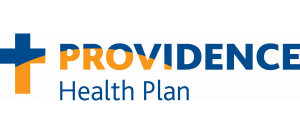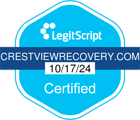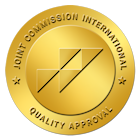It’s common to hear the phrase “you can’t go home again.” In many ways, that’s true—yet for adults who experienced trauma in childhood, “home” often follows them in the body, mind, and spirit. At Crestview Recovery, we offer treatment for adults (18+) struggling with the ripple effects of childhood trauma in Portland, Oregon. Our goal in this post is to explain how childhood trauma can impact adulthood, and to offer an honest, hopeful look at what can help in the healing process.
Understanding Childhood Trauma
What counts as “childhood trauma”? It’s a broad category, but generally refers to one or more experiences in childhood (or adolescence) that overwhelm a child’s ability to process and cope. These can include:
- Physical, emotional, or sexual abuse
- Neglect (emotional or physical)
- Bullying, peer violence, or peer abandonment
- Loss of a caregiver (death, desertion, incarceration)
- Exposure to domestic violence or substance abuse in the home
- Serious accidents, natural disasters, or medical trauma
- Chronic stress from poverty, housing instability, or community violence
Trauma doesn’t always mean extreme, life-threatening events. What matters is the impact it has on a child’s sense of safety, belonging, and self. Children lack the maturity, perspective, and support to fully make sense of adversity. If they don’t have stable, attuned caregivers to help scaffold their emotional response, their coping strategies may become distorted or defensive. Over time, these responses can calcify into patterns that carry forward into adulthood.
According to the URMC article “How Childhood Trauma May Impact Adults”, it provides a useful framework: early trauma affects the developing brain and stress-response systems, which in turn influence how individuals respond to future stressors. It’s also worth noting that trauma and PTSD are distinct. Trauma is the experience; PTSD is one possible outcome when the trauma’s imprint disrupts daily functioning (intrusive memories, avoidance, hyperarousal).
How Childhood Trauma Impacts Adulthood

Childhood trauma disrupts the architecture of the developing brain and the body’s regulatory systems. In effect:
- The hypothalamic-pituitary-adrenal (HPA) axis (the central stress response system) can become overactive or dysregulated.
- Neural circuits involving emotion regulation, threat detection, and self-soothing may become hypersensitive.
- Trauma leaves a physiological imprint, characterized by chronic inflammation, a weakened immune response, and increased cardiovascular and metabolic risks.
Trauma in early life often leads to:
- Anxiety, depression, panic symptoms
- Elevated risk of PTSD
- Complex PTSD (C-PTSD)—a constellation of emotional dysregulation, identity disturbances, relational difficulties
- Substance use or addiction (sometimes as an attempt to self-medicate)
- Borderline personality traits, dissociation, shame, or self-criticism
Because trauma often involves betrayal or violation by a person (e.g., caregiver, family member), survivors may struggle deeply with trust, intimacy, or healthy boundaries
To survive early adversity, children may adopt coping strategies that prove maladaptive in adulthood:
- Emotional suppression or numbing
- Hypervigilance and defensiveness
- People-pleasing, compliance, or over-accommodation
- Overcontrol or perfectionism
- Impulse control issues, substance misuse
- Avoidance of emotional intimacy or conflict
These are not “bad choices”- they were survival strategies. However, over time, they may cost a person their relationships, emotional well-being, or a sense of a complete self.
Because trauma often involves disruptions in early attachment, adults may find it difficult to:
- Trust others or form secure attachments
- Express needs or set boundaries
- Tolerate closeness or vulnerability
- Recover from relational losses (breakups, betrayal, rejection)
A person might oscillate between clinginess and withdrawal, or have repeated patterns of being hurt by interpersonal dynamics.
Trauma’s burden is not just psychological. It can manifest and exacerbate:
- Chronic pain syndromes
- Autoimmune disorders
- Cardiovascular disease
- Gastrointestinal issues
- Sleep disturbances (insomnia, nightmares)
Also, adults who were traumatized as children have an elevated risk for homelessness, incarceration, revictimization, and early mortality.
What Can Help in the Healing Process?
The word healing implies that something was wounded. But it also implies possibility: that even deep wounds can change, integrate, and transform.
Here are evidence-based and clinically grounded paths toward healing.
One of the first steps is acknowledging what happened. Many adults hold unspoken, fragmented, or even repressed memories. Therapy (or journaling, in safer settings) can help:
- Name the event(s) without judgment
- Identify internalized beliefs (e.g., “I’m not safe,” “I’m unlovable”)
- Differentiate childhood self from adult self
Therapies that directly target trauma are among the most effective:
- Trauma-focused Cognitive Behavioral Therapy (TF-CBT)
- Cognitive Processing Therapy (CPT)
- EMDR (Eye Movement Desensitization and Reprocessing)
- Somatic therapies (e.g., Somatic Experiencing, Sensorimotor Psychotherapy)
- Narrative therapy / Written expressive therapy (to externalize, re-author)
For those who struggle with intense emotions, self-harm behaviors, or impulsivity, DBT can be life-changing. DBT provides:
- Emotion regulation skills
- Distress tolerance work
- Mindfulness training
- Interpersonal effectiveness techniques
Crestview’s trauma treatment program includes Dialectical Behavior Therapy as one of its modalities.
Many trauma survivors find that they carry internal “parts” (vulnerable, judge, protector, etc.). Internal parts work lets you:
- Dialogue with those parts
- Secure a compassionate Self
- Reconcile the parts that remained stuck
Because trauma resides not only in the mind but in the body, integrating body-based practices is vital:
- Breathwork, grounding, body scans
- Yoga, qigong, tai chi
- Movement therapies (dance, trauma-informed movement)
- Progressive muscle relaxation
- Biofeedback or neurofeedback
These practices help regulate the nervous system and reconnect the body with a sense of safety.
While no medication can “cure trauma,” psychiatric medications can help with associated mental health symptoms like depression, anxiety, hyperarousal, or sleeping difficulties. Crestview’s programs may use medication-assisted support as part of a treatment plan.
Healing in isolation is harder. Community and relational repair matter. Strategies include:
- Group therapy with survivors
- Attachment-based relational therapy
- Family therapy (when safe and possible)
- Peer support groups
- Healthy relational boundaries and gradual exposure to trust
Healing is as much an art as a science. Encourage:
- Self-compassion practice
- Rituals of repair (journaling, ceremonies, expressive arts)
- Creativity (painting, music, dance, poetry)
- Somatic integration (mind–body coherence)
- Gradual exposure to situations, feelings, or people once too difficult to face
Trauma recovery isn’t linear. The brain and body change gradually. Healing means learning to:
- Titrate (go slowly when memory, emotions flood)
- Return to baseline after activation
- Trust internal resources again
Change is possible, even for long-standing trauma.
Crestview Recovery’s Approach to Treating Childhood Trauma in Adults

At Crestview Recovery in Portland, Oregon, we specialize in combining mental health care with addiction treatment through dual diagnosis. Our program for childhood trauma in adults offers:
- A full assessment of mental and physical health and symptom severity to tailor treatment
- Multiple modalities of care (inpatient, outpatient, telehealth) based on clients’ needs
- Evidence-based therapies: CBT, DBT, trauma therapy
- Family therapy involvement when safe and appropriate
- Medication-assisted symptom relief (not a cure, but support)
- A compassionate, trauma-informed environment where clients are encouraged to engage with, process, and reframe their experiences gradually
Realistic Expectations & Hard Truths
- Healing takes time. There’s no instant fix. Change unfolds over months or years.
- Relapses or setbacks may happen. Trauma recovery and addiction recovery are interwoven; lapses don’t mean failure.
- You won’t “forget,” but you may reclaim your narrative. The goal is not to erase memory—it’s to create a life that thrives despite what happened.
- You need steady relational repair. Safety in connection is critical; many wounds are relational in nature.
Your Next Step Toward Healing
If you’re reading this and recognizing parts of your story in it, here’s what you can do next:
- Reach out for help. Contact Crestview Recovery’s admissions team in Portland.
- Do a safe self-check. What symptoms resonate most (anxiety, hypervigilance, emotional numbing)?
- Find a trauma-informed therapist. Ask: Do they specialize in trauma? Do they employ EMDR, CPT, or somatic work?
- Start small with regulation tools. Try grounding, breathing, and journaling to help manage your emotions.
- Be kind to yourself. This is not your fault. You survived. You are worthy of recovery.
Crestview Recovery Offers Treatment for Childhood Trauma in Portland, Oregon

At Crestview Recovery, we understand that childhood trauma doesn’t just fade with time—it follows you, often in silence. The anxiety, emotional dysregulation, relationship struggles, or substance use you face today may be rooted in experiences from decades ago. That’s why we offer specialized, trauma-informed care for adults dealing with the lasting effects of childhood trauma.
Our team in Portland, Oregon, is trained to help you identify the source of your pain—not just treat the symptoms. Whether you’re navigating PTSD, depression, anxiety, or addiction, we work with you to build a treatment plan that honors your story and supports real recovery. We offer multiple levels of care, including residential treatment, intensive outpatient programs (IOP), and partial hospitalization (PHP), all with trauma-specific therapies like DBT and cognitive behavioral therapy (CBT).
At Crestview Recovery, you’ll find a safe, supportive environment where you can explore your past without fear of judgment. Healing isn’t about forgetting—it’s about reclaiming your power and learning how to live without being ruled by what happened.
If you or someone you love is struggling with unresolved childhood trauma, you’re not alone—and you don’t have to carry it alone.
Call us today to learn more. Your future doesn’t have to look like your past. Let’s work together to help you find peace, purpose, and strength.



